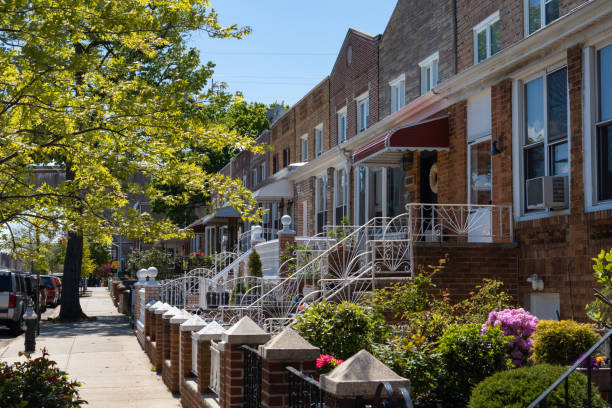
Photo via Getty Images
June 3, 2025 By Richard Khuzami
In recent years, the 31st Street corridor in Astoria has steadily evolved, and the proposed rezoning at 32-07 31st Street for a 13-story senior housing development is the next necessary step.
This rezoning would allow for 100% affordable senior housing directly adjacent to the Broadway/31st st subway station. It’s the right use at the right location and builds on a trend of thoughtful development reshaping this corridor.
The property across from the senior housing site is also included in the rezoning. It will be required to use the Mandatory Inclusionary Housing (MIH) program, which designates approximately 25% of new development as affordable, rent-stabilized units.
At the next stop at 30th Ave on the N line is the 10-story Pistilli Building, a prominent example of residential density working with the neighborhood. Nearby, the Finkelstein rezoning—approved in recent years—allowed for an 11-story, 104-unit project. And at the Astoria Boulevard station, a major rezoning is replacing the Staples and Neptune Diner with new housing. Though construction hasn’t begun, the plan includes up to 14 stories, setting the stage for a more transit-connected neighborhood.
Taller residential buildings on 31st Street are not new. They are already being built, as part of a citywide push to address the housing crisis through smarter zoning near transit. Rejecting this project would ignore that reality.
What makes this rezoning compelling is that it delivers a 100% affordable building for seniors. In a city where older adults struggle to remain in their communities due to rising rents and inaccessible buildings, this project offers a lifeline—allowing them to age in place, close to friends, services, and transit, without displacing anyone.
The Community Board vote stipulated that they would not support the rezoning unless the property across the street—the former supermarket site—was excluded. This weakens the broader purpose of the rezoning, which is to increase housing supply in a high-demand area and ease pressure on rents.
Some board members questioned whether increasing the housing supply reduces rents. But during the pandemic, over 67,000 apartments sat empty—compared to just 7,116 today—and Manhattan rents dropped sharply. Landlords even offered up to three months free. The lesson: when supply rises, prices fall. Of course, increasing supply by eliminating population is not a sustainable strategy. We need to create new housing, not vacancies. If we were to build another 60,000 apartments, as the pandemic temporarily created, we’d likely see meaningful reductions in rents again. Unfortunately, it’s impossible to judge the effectiveness of supply-and-demand policies when so little new construction is allowed to move forward. The problem isn’t the theory—it’s the baseless roadblocks we’ve artificially imposed on getting anything built.
Astoria Affordable Senior Center
Excluding the supermarket site would force any future developer to begin a new ULURP process, adding 12 to 18 months and up to $225,000 in extra costs. These delays affect what kind of housing is built and at what price. Higher costs mean higher rents for tenants.
This is not theoretical. According to a 2023 Citizens Budget Commission report, prolonged ULURP processes and related costs are major barriers to timely, affordable housing. Fragmenting rezonings makes housing more expensive before it’s even built.
Piecemeal zoning works against our need for coordinated, transit-oriented growth. Excluding the supermarket site doesn’t just delay a project—it undermines efforts to make housing more accessible and affordable.
Including both sites is not only necessary—it makes sense. A comprehensive, block-level approach leads to better planning and more predictable development. It avoids fragmented decisions that leave neighborhoods disjointed and underbuilt.
Critics may argue a 13-story building is too tall. But nearby examples—like the Pistilli Building and Finkelstein site—show otherwise. The elevated N/W train tracks create a natural buffer for taller buildings along 31st Street, which is wider and more transit-rich than adjacent side streets.
Others may fear a slippery slope—that approving this will lead to unchecked high-rises. But rezoning in New York City is deliberate, public, and case-by-case. Every proposal requires months of review and community input. When done right, as with this project, it brings more benefit than burden. The 2010 Astoria rezoning north of Broadway is a good example: the neighborhood’s character has been sustained, and upzoning has only occurred near transit corridors to support housing needs.
Astoria has long been a neighborhood of transition and renewal. Welcoming a project that offers deeply affordable housing to our seniors is not a threat—it’s an extension of that legacy. Our community has changed before, and each time, it has adapted and thrived.
We should support this rezoning not for change’s sake, but because it meets a clear need, aligns with existing trends, and reflects our commitment to a diverse, inclusive neighborhood.
*Richard Khuzami is President of the Old Astoria Neighborhood Association (OANA).
